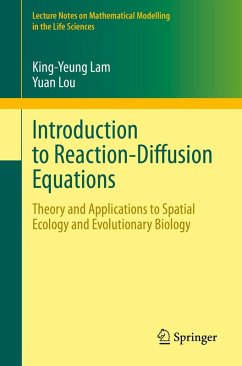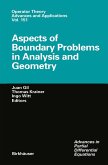This book introduces some basic mathematical tools in reaction-diffusion models, with applications to spatial ecology and evolutionary biology. It is divided into four parts.
The first part is an introduction to the maximum principle, the theory of principal eigenvalues for elliptic and periodic-parabolic equations and systems, and the theory of principal Floquet bundles.
The second part concerns the applications in spatial ecology. We discuss the dynamics of a single species and two competing species, as well as some recent progress on N competing species in bounded domains. Some related results on stream populations and phytoplankton populations are also included. We also discuss the spreading properties of a single species in an unbounded spatial domain, as modeled by the Fisher-KPP equation.
The third part concerns the applications in evolutionary biology. We describe the basic notions of adaptive dynamics, such as evolutionarily stable strategies and evolutionarybranching points, in the context of a competition model of stream populations. We also discuss a class of selection-mutation models describing a population structured along a continuous phenotypical trait.
The fourth part consists of several appendices, which present a self-contained treatment of some basic abstract theories in functional analysis and dynamical systems. Topics include the Krein-Rutman theorem for linear and nonlinear operators, as well as some elements of monotone dynamical systems and abstract competition systems.
Most of the book is self-contained and it is aimed at graduate students and researchers who are interested in the theory and applications of reaction-diffusion equations.
The first part is an introduction to the maximum principle, the theory of principal eigenvalues for elliptic and periodic-parabolic equations and systems, and the theory of principal Floquet bundles.
The second part concerns the applications in spatial ecology. We discuss the dynamics of a single species and two competing species, as well as some recent progress on N competing species in bounded domains. Some related results on stream populations and phytoplankton populations are also included. We also discuss the spreading properties of a single species in an unbounded spatial domain, as modeled by the Fisher-KPP equation.
The third part concerns the applications in evolutionary biology. We describe the basic notions of adaptive dynamics, such as evolutionarily stable strategies and evolutionarybranching points, in the context of a competition model of stream populations. We also discuss a class of selection-mutation models describing a population structured along a continuous phenotypical trait.
The fourth part consists of several appendices, which present a self-contained treatment of some basic abstract theories in functional analysis and dynamical systems. Topics include the Krein-Rutman theorem for linear and nonlinear operators, as well as some elements of monotone dynamical systems and abstract competition systems.
Most of the book is self-contained and it is aimed at graduate students and researchers who are interested in the theory and applications of reaction-diffusion equations.
Dieser Download kann aus rechtlichen Gründen nur mit Rechnungsadresse in A, B, BG, CY, CZ, D, DK, EW, E, FIN, F, GR, HR, H, IRL, I, LT, L, LR, M, NL, PL, P, R, S, SLO, SK ausgeliefert werden.









